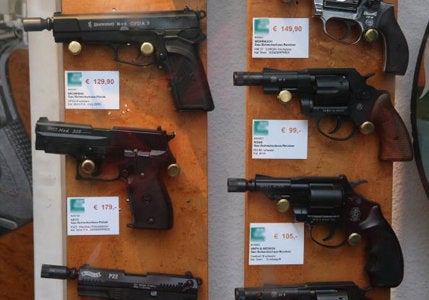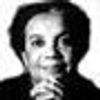
I'm deeply disturbed that after a decade of decline, the number of firearm deaths among children and youths has increased for the second year in a row. Our 2009 "Protect Children, Not Guns" report released in September reveals that almost nine children and teens die from gunfire every day--one child death every two hours and 45 minutes. The report, based on the most recent data from the Centers for Disease Control and Prevention (CDC), states that 3,184 children and teens died from gunfire in 2006, a six percent increase over 2005, a total of 17,451 were victims of non-fatal firearms injuries, a seven percent increase from the previous year. When people from other industrialized democracies learn of America's child gunshot death rates, they're equally troubled.
A major reason for these tragic young deaths is the prevalence and proliferation of guns. Americans possess more than 270 million privately owned firearms--the equivalent of nine guns for every 10 men, women and children. The United States is one of the few industrialized countries without common sense controls on gun sales. We regulate toy guns but not the real ones that snuff out tens of thousands of human lives every year.
Among the young people killed by firearms, 2,225 were homicide victims, 763 committed suicide and 196 died in accidental or undetermined circumstances. The overwhelming majority, nearly 90 percent, were boys. More preschoolers--63--were killed by firearms than law enforcement officers killed in the line of duty--48. The death toll among Black children is growing at an alarming rate. Black males ages 15 to 19 are almost five times as likely as their White peers and more than twice as likely as their Hispanic peers to be killed by a firearm.
The destructive impact of firearms affects all of us by increasing health care costs, overtaxing social services and decreasing national productivity. And the deaths from guns are causing widespread emotional instability and traumatizing survivors, leaving families and communities in distress. Gun violence is so pervasive in some Black communities that it constitutes a serious health risk. It's come to the point where many of the cases of post-traumatic stress disorder in Black neighborhoods are not only of veterans returning from war zones but also include children whose goals are merely to walk to the corner store in safety. Too many of them speak of the future in terms of "If I grow up" instead of "When I grow up."
John C. Raphael Jr., pastor of a Baptist church in New Orleans' Central City neighborhood, says for every murder of a young man, he sees two potential killings that may follow. Street associates of the victim may exact revenge on the presumed killer, or they may kill a friend of the victim who witnessed the murder even if he didn't talk to police. He explains that many young people have become numb to the killings that occur around them and accept them as normal.
We need stronger federal legislation to protect our children from gun violence. But, regrettably, in many of the states and at the national level it's an uphill fight to control firearm trafficking. Thirty-two states have no laws requiring sellers of firearms at gun shows to first conduct background checks on all buyers. This gun show loophole has been used to evade laws designed to make it harder for guns to get into the hands of children, criminals and the mentally unbalanced.
Gun shows are a huge market for the sale of guns by vendors with or without federal firearms licenses. Ten years ago, the two teen-aged shooters who killed 12 fellow students and a teacher at Columbine High School near Littleton, Colorado, in April 1999 got part of their arsenal illegally through a gun show. Congress must pass legislation to close the gun show loophole and strengthen provisions of the Brady Handgun Violence Prevention Act requiring a National Instant Criminal Background Check System.
There is strong evidence that background checks can be effective. Between 1994 and 2007, background checks performed by federal firearms licensees resulted in denying guns to more than 1.6 million illegal buyers. It is also imperative that the federal assault weapons ban be reinstituted. According to the Brady Center to Prevent Gun Violence, the ban reduced the incidence of assault weapons use in crimes by 66 percent between 1995 and 2001.
But the responsibility to keep our children safe cannot rest solely with our political leaders. There are things individuals and families can do, such as remove guns from homes, mobilize community support to protect children from gun violence, stress nonviolent values and conflict resolution, refuse to buy or use products for children and teens that glamorize violence, and provide children and teens positive alternatives to the streets where they can feel safe and protected.
We must hold our legislators accountable to implement these common sense gun safety measures. What's at stake is the safety of our children and communities, which are increasingly at risk.
